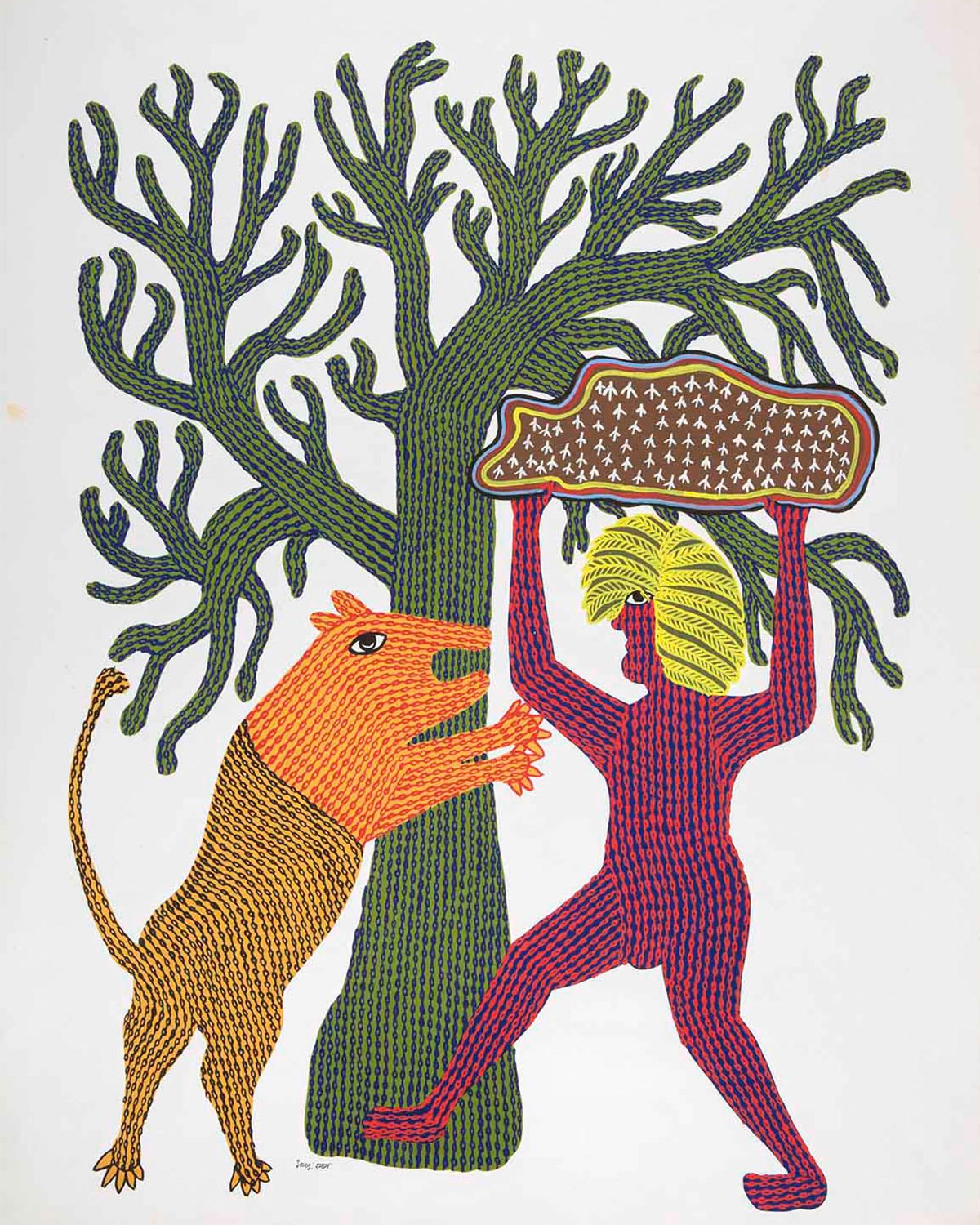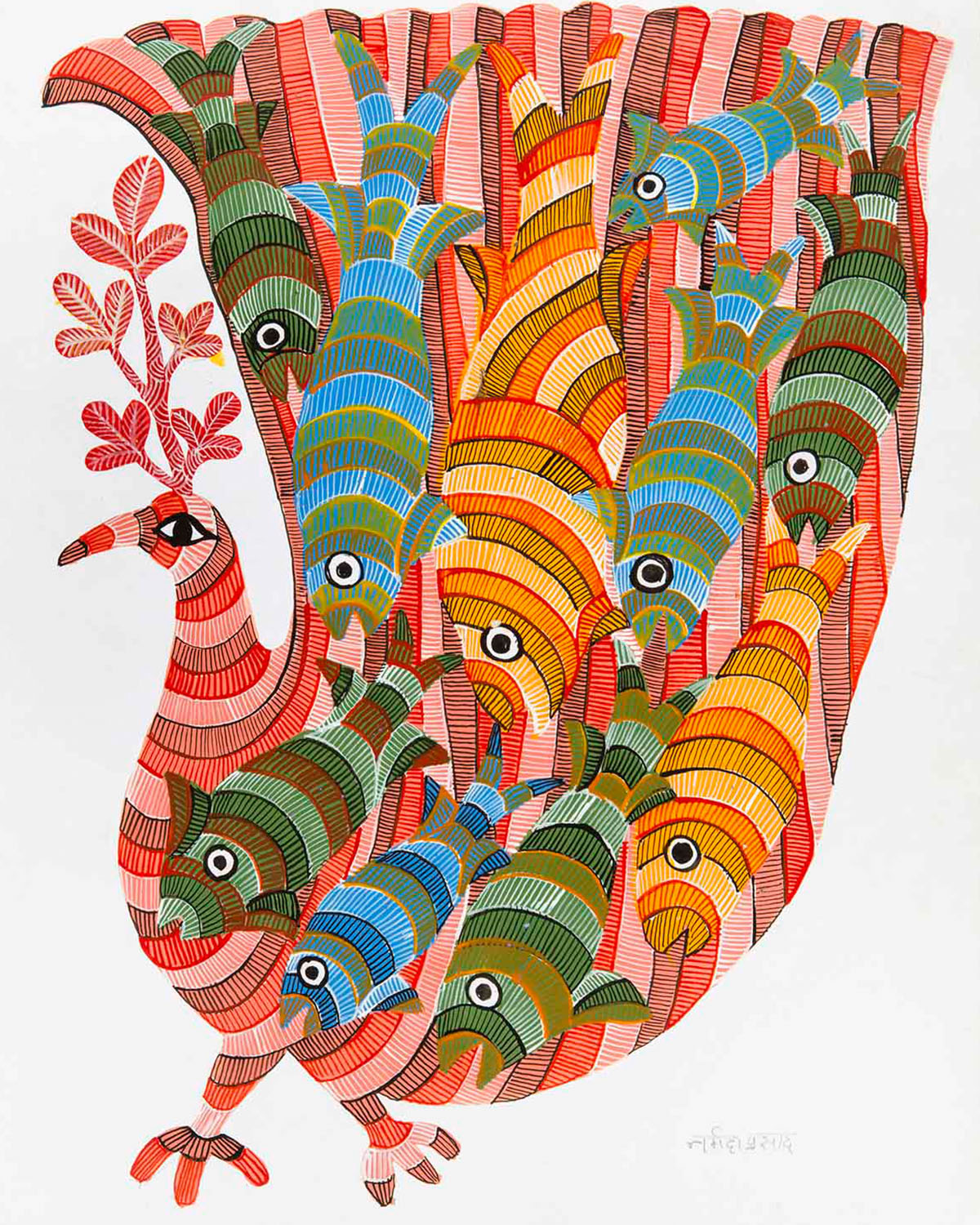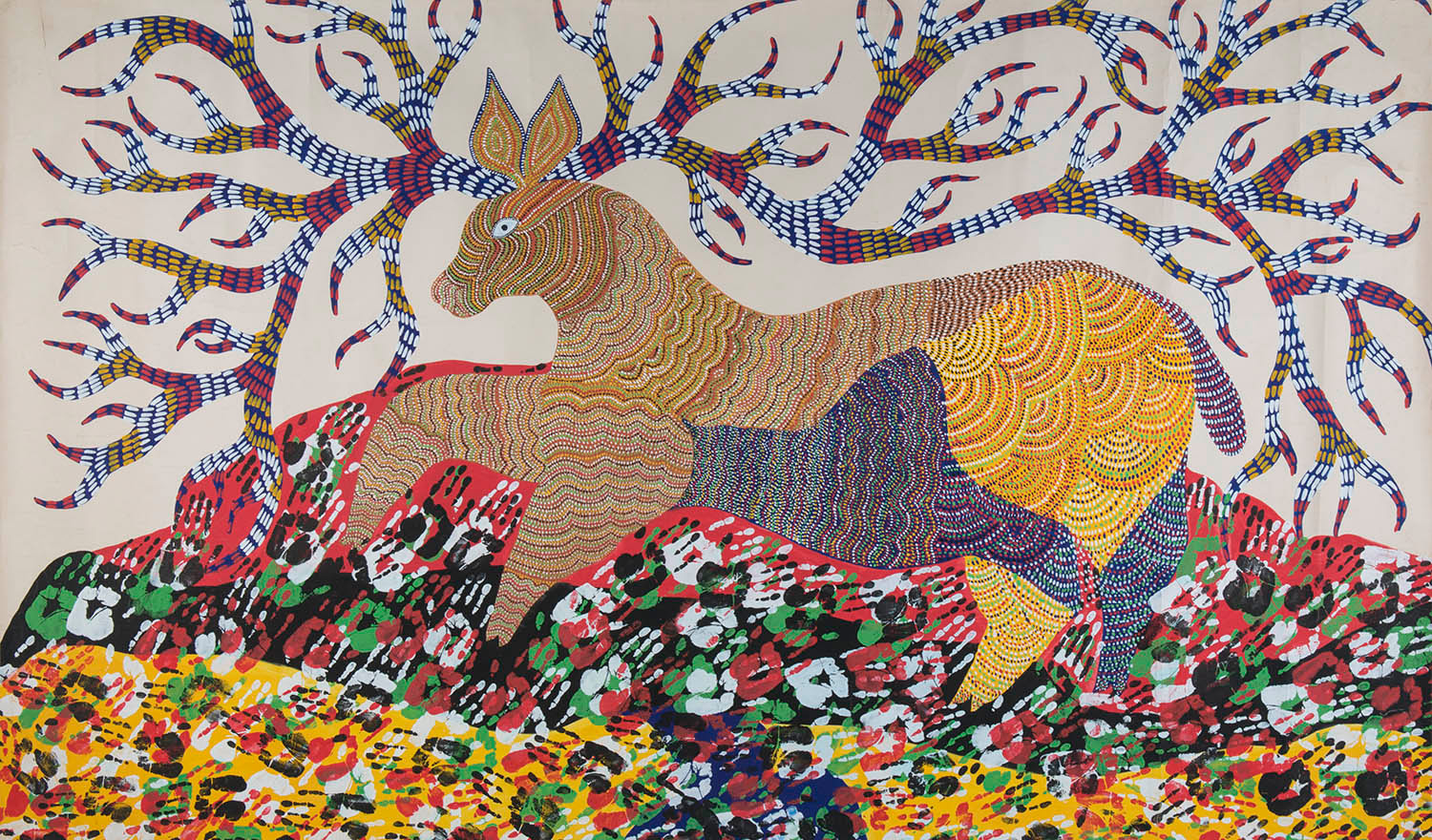ARTICLE
Gond Painting
Jangarh Singh Shyam, a twentieth-century Pardhan artist, is credited with giving Gond art a contemporary character with his unique style, now known as Jangarh Kalam. For most of Shyam’s career, Gond art was often conflated with Jangarh Kalam due to the assumptions of early observers, who mistook Shyam’s own style to be representative of traditional Gond painting. Jangarh Kalam is highly figurative, with a focus on images of the flora and fauna found in Gond mythology, such as peacocks, tigers, snakes and birds, and deities like Phulvari Devi and Marahi Devi.
As it draws heavily from Gond mythology, folk stories and the geometric style of Pardhan painting, and as it is practiced primarily by Pardhan artisans as an inherited practice, Jangarh Kalam is now regarded by some scholars as contemporary Gond painting, with an awareness of the difference between the historic mural art tradition and the style inspired by Shyam.
Bibliography
Our website is currently undergoing maintenance and re-design, due to which we have had to take down some of our bibliographies. While these will be re-published shortly, you can request references for specific articles by writing to hellomapacademy@map-india.org.









